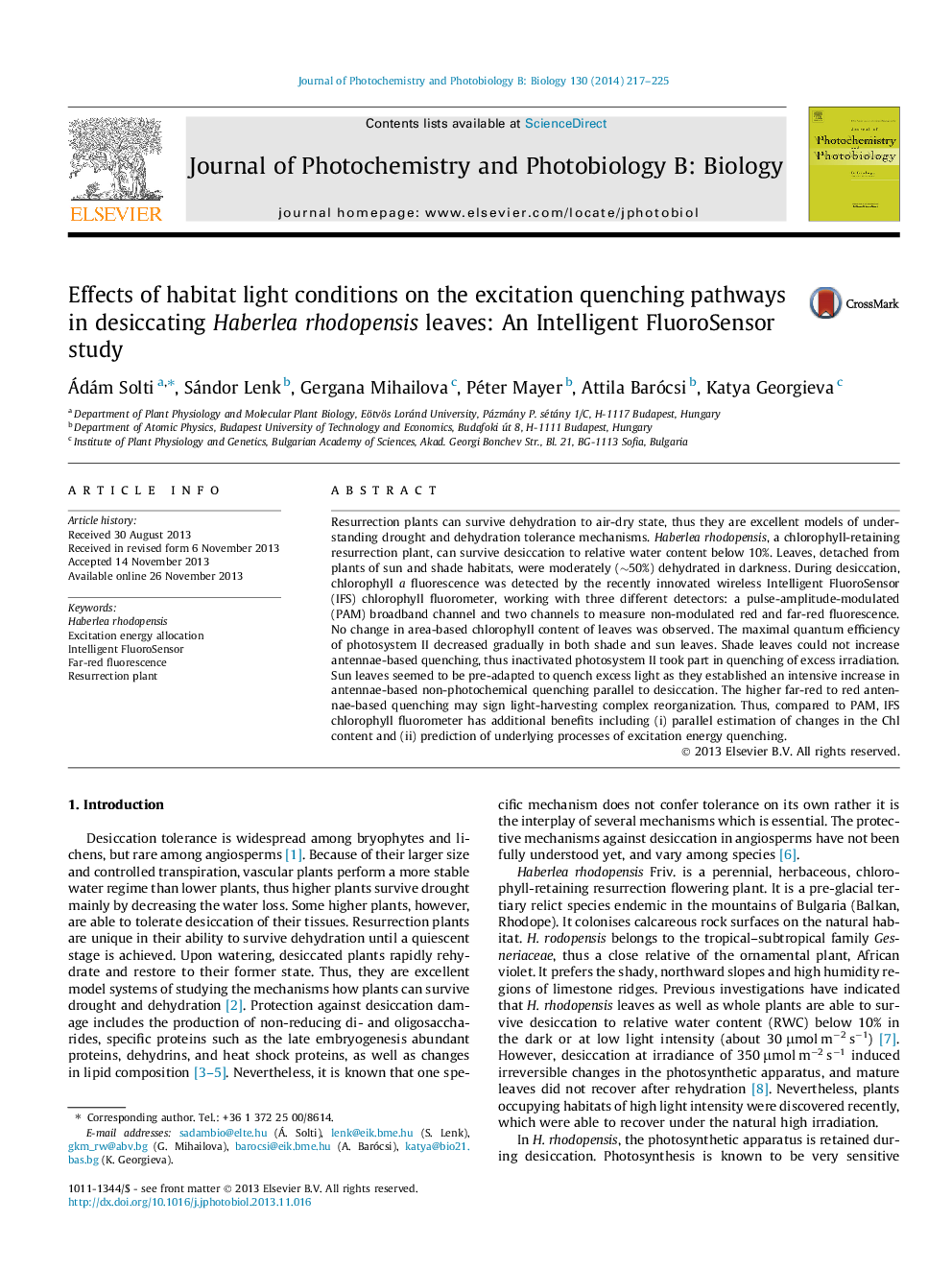| کد مقاله | کد نشریه | سال انتشار | مقاله انگلیسی | نسخه تمام متن |
|---|---|---|---|---|
| 30440 | 44478 | 2014 | 9 صفحه PDF | دانلود رایگان |
• The complete functionality of Intelligent FluoroSensor (IFS) apparatus is shown.
• A desiccation study of the homochlorophylous resurrection model plant is present.
• Population differences are important in excitation energy allocation.
• Red/far-red ratios of quenching parameters correlate to desiccation processes.
Resurrection plants can survive dehydration to air-dry state, thus they are excellent models of understanding drought and dehydration tolerance mechanisms. Haberlea rhodopensis, a chlorophyll-retaining resurrection plant, can survive desiccation to relative water content below 10%. Leaves, detached from plants of sun and shade habitats, were moderately (∼50%) dehydrated in darkness. During desiccation, chlorophyll a fluorescence was detected by the recently innovated wireless Intelligent FluoroSensor (IFS) chlorophyll fluorometer, working with three different detectors: a pulse-amplitude-modulated (PAM) broadband channel and two channels to measure non-modulated red and far-red fluorescence. No change in area-based chlorophyll content of leaves was observed. The maximal quantum efficiency of photosystem II decreased gradually in both shade and sun leaves. Shade leaves could not increase antennae-based quenching, thus inactivated photosystem II took part in quenching of excess irradiation. Sun leaves seemed to be pre-adapted to quench excess light as they established an intensive increase in antennae-based non-photochemical quenching parallel to desiccation. The higher far-red to red antennae-based quenching may sign light-harvesting complex reorganization. Thus, compared to PAM, IFS chlorophyll fluorometer has additional benefits including (i) parallel estimation of changes in the Chl content and (ii) prediction of underlying processes of excitation energy quenching.
Journal: Journal of Photochemistry and Photobiology B: Biology - Volume 130, 5 January 2014, Pages 217–225
